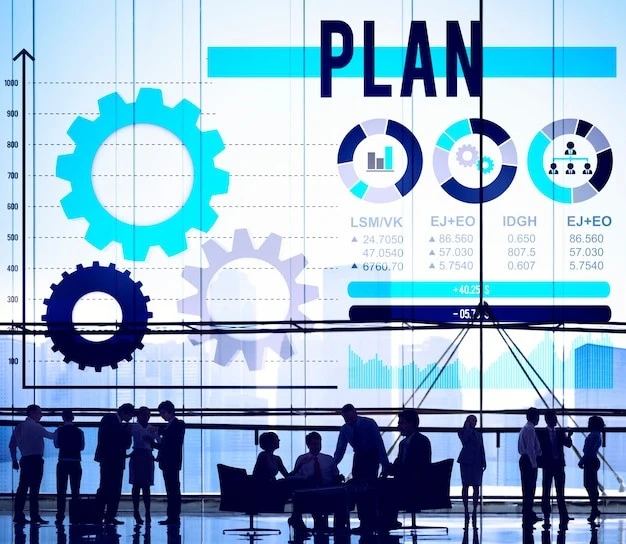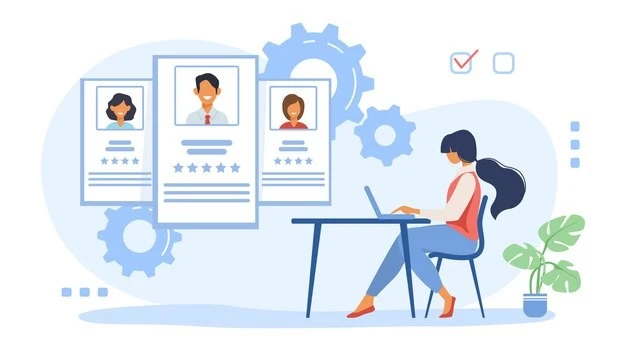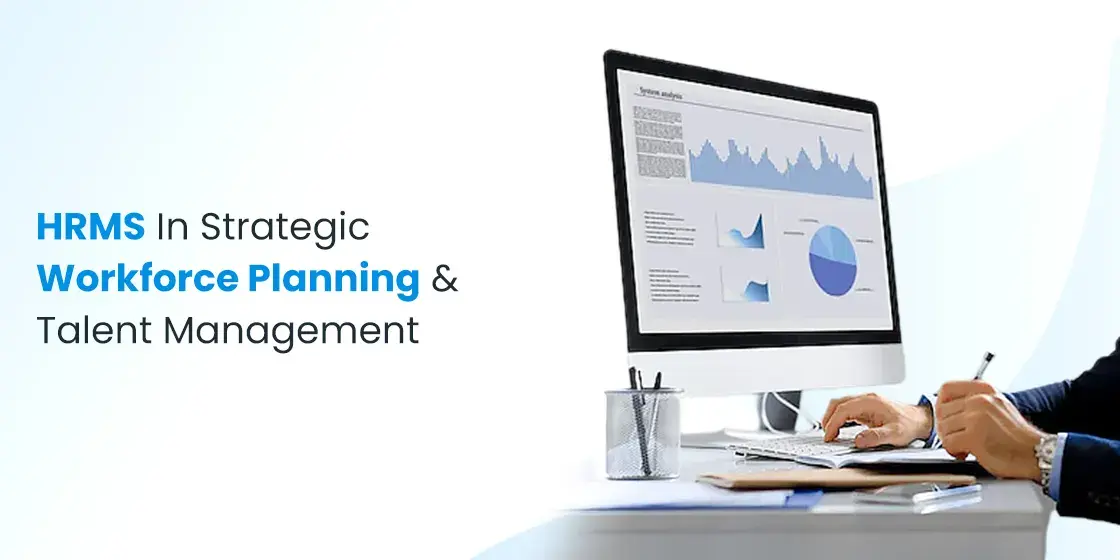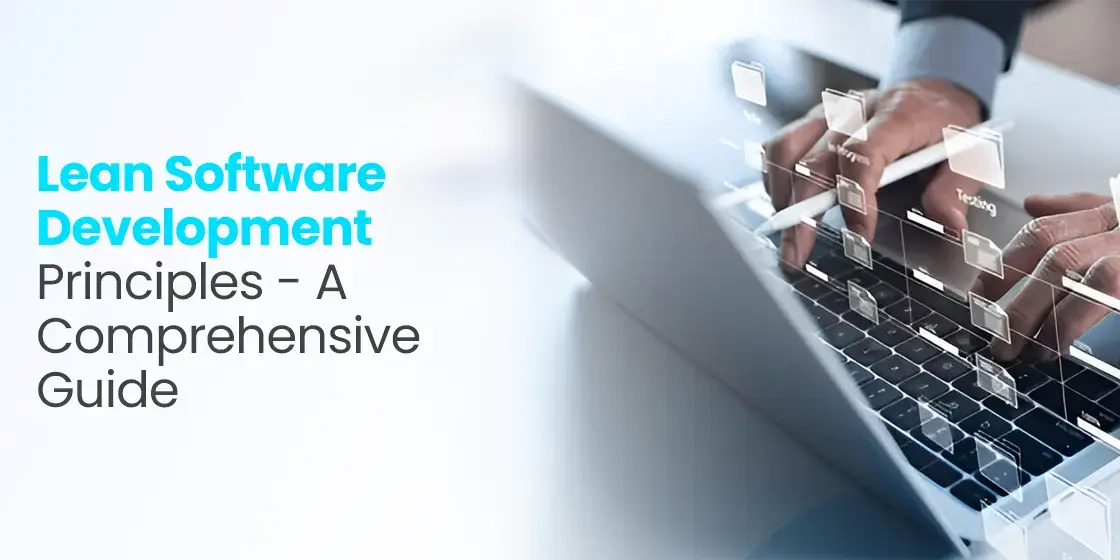Table of Content
How Can a HRMS Help an Organization Onboard & Manage Its Workforce Better
There is often a lot of confusion when it comes to the terms of workforce planning and talent management. For the vast majority, they are one and the same, and believed to be the job for the HR team hired by a company. However, there are two things wrong with this.
One, both talent management and workforce planning are distinct roles of extreme importance in an organization. And two, they aren’t the only jobs for the company’s human resources team, but are two of the most critical tasks assigned to them.
So why do people confuse the two terms then? And more importantly, how does a company and its HR ensure that these tasks are done well, given that they are so important?
Before that, we need to clear one thing. When it comes to how an HRMS help an organization improve its onboarding and talent management, there is a very simple answer. Most HRM solutions are built on an established ERP software system that allows the human resources to collect, process, and analyze data from all over the organization.
Now, a human wading through all that data will take an inordinately long time, and that too with errors through it. However, a software can do it much faster, and can even improve the accuracy by a great margin. That is how an HRMS helps an organization with their human resource-related activities.
Let’s dive in and discover the difference between workforce planning and talent management, and find out how the two roles connect with each other to ensure that their company’s resource needs are filled. Moreover, we will also discover how a comprehensive, custom HRMS software helps a company develop strategic workforce plans to prepare for any unforeseen issues that impact productivity.
What is Talent Management?

Let’s start this topic with the term more familiar to us all – talent management. Now, think for a minute. When you hear these words, what is the first thing that comes to mind? What does talent management mean to you, specifically?
Well, to put it simply, talent management is a continuous process in an organization where the respective HR resources work to retain talent required by the company. Moreover, it is their job to ensure that the resources are utilized properly as per their expertise, and that they are performing at an optimum level.
Some of the most important duties in talent management include:
- Developing a streamlined onboarding process that is easy and intuitive for all new resources
- Informing these new hires about their roles and guiding them on their responsibilities
- Managing the motivation of all employees, new or old, and make them feel valued
- Ensuring that the employees feel they are in control of their careers and growth ladders
- Ensuring that the employees know that the organization supports their career ambitions
- Ensuring that every employee has the tools they need to perform their job optimally
To sum all these duties up, we can say that it is the job of the talent management resource on an HR team to ensure that the company has the best candidate for the role required. And that is why it is such an important job as filling the skill gap in an organization is an ongoing task, as finding the right talent before your competition does is how a company ensures its success. So important is talent management in an organization, that a 2019 study reports that 83% of HR leaders use talent management strategies to achieve a substantial positive impact.
Understanding the Concept of Workforce Planning
Now that we have taken a look at the meaning behind the phrase “talent management”, the next step is to dive in and understand the concept of workforce planning.
Workforce planning is all about building strategies built around your resources in order to achieve business goals. This kind of strategic workforce planning is often determined by industry trends, in terms of techniques, standards, and technologies. And in order to stay competitive, organizations and their HR develop plans that combine elements of workforce planning, industry trends, and organizational analytics.
Mostly, the duties of this role includes:
- Identify and plan for any hiring requirements within the organization well in advance
- Utilize data analytics to identify gaps in strategy to sustain current employees
- Predict and plan for any potential changes in the workforce, major or otherwise
- Help and guide the employees towards consistent upskilling and growth
- Establish practices and strategies to get the best resources before your competition
These duties are all encompassed and addressed in the industry-standard workforce planning process, which helps organizations establish their own unique strategic workforce plans. And it has proven to be so successful that many organizations are now investing in it to get data-driven insights and forecasts for their workforce. And why not, when implementing strategic workforce planning allows them to benefit from demand and action planning, as well as gap analysis reports.
Steps to Develop a Strategic Workforce Plan

Earlier, we mentioned the phrase “workplace planning process” in passing. Let’s talk about that for a bit. What is it, and how does it help organizations develop their strategic workplace plans.
Well, in order for an organization to develop a strategic plan for the workplace, they need to know all about the business goals that are at risk of impact. This is where all the relevant company stakeholders, most commonly the C-Suite and the HR leaders, work together and come up with a plan that would allow the company to achieve those goals.
Now, its quite common to see business leaders often leaning towards short-term fixes to staffing and recruitment. However, that is because they often lack the data necessary to see the long-term ramifications of their suggestions, data that is available to the company’s human resources.
Therefore, this is where the HR uses this data and the insights from it to highlight the importance of organic, sustainable improvement in this section, in order to avoid similar issues in the future.
To sum it all up, strategic workplace planning refers to identifying and hiring the right people, with the desired skills, at the perfect time, for the right cost. Moreover, while organization do have slightly different version of this process, at its core the planning process consists of these seven steps.
- Assess your organization’s objectives
- Study your existing workforce
- Discover any talent gaps in your organization
- Anticipate potential issues and risks
- Develop a plan to address them
- Utilize that plan
- Go back and refer to that plan at each step
The Coexistence of Workforce Planning and Talent Management

Now here is where we come back to one of our original questions – why do people often confuse the two terms talent management and workplace planning?
To understand that, we need to go back for a look at the two definitions we learned earlier. If we take a look at the duties that are part of each role, you will see that while both relate to the organization’s workforce, they fulfill separate aspects of that process.
Workplace planning is all about taking your company goals, identifying talent gaps in your organization, and developing the requirements for the perfect resources to shore up those gaps. All in the name of achieving the organizational goals. Talent management is all about using those requirements identified, onboarding the people that fulfill those requirements, and then evaluating and implementing plans to retain and upskill them as needed.
Therefore, if we were to sum it all up, we could say that strategic workplace planning and talent management go hand-in-hand to ensure that the company achieves its organization goals. And it does so by identifying, hiring, retaining, and upskilling the necessary company human resources.
HRMS and Its Impact on Strategic Workforce Planning with Talent Management
So far, we have taken an in-depth look at the concepts of talent management and workplace planning, as well as how the two terms correlate. Now we come to the most important part of this discussion – how does using an HRMS help with improving strategic workforce planning and talent management?
Let’s first identify some of the basic areas that a company would expect their HRMS to help with.
- Smoother recruitment and onboarding process
In order to provider a smoother, more intuitive recruitment and onboarding process, an HRMS need to have some sort of data analytics and AI capability to improve on manual processes.
- Better, data-driven workforce planning
Using data science and analytics capabilities, the company could extract better insights to improve the workforce planning strategies they develop for better target achievements.
- Improved rate of employee retention
With AI and deterministic analytics capabilities, the HRMS would be able to identify opportunities for employees’ career planning and learning and development. Moreover, based in their activity, it could also identify those that need R&R for greater motivation at work.
The role of an HRMS at an organization is to streamline the various HR processes and to reduce errors, so that the organization can prepare itself for sustainable growth.
The Benefits of HRMS in Talent Management and Better Workplace Strategies

Let’s say that you have integrated an HRM software solution into your organization’s processes. You are hoping that it will give you better insights into how you can improve your company’s chances of achieving its organization goals. What are some ways that the HRMS would be helpful in this instance?
Well, let’s first take a look at a few benefits that an HRMS offers its organization.
- First, it provides a centralized collection of all employee records, including their date of joining, years of experience, performance records, and more. Basically, the entire lifecycle of that employee at your organization will be available to you, all within a single tool that allows for quick search.
Moreover, it would also have the details of past employees, as well as potential candidates assessed but rejected due to the position being filled. Moreover, this data could also help highlight special milestones for employees, allowing the HR to plan something to commemorate the event if desired. Finally, the HR would also be able to access the employee’s financial records regarding salaries and compensations, providing a complete picture for each employee as desired.
- Next, some of the more comprehensive HRM software solutions out there also allow for the capability of knowledge management. Knowledge management refers to the compilation and distribution management of all company information, including contracts, internal memos, newsletters, training manuals and guides, and much more.
This can be utilized along with an organization-wide access control system where an employee may access the required data, given that they have the clearance and need for it. This would reduce unchecked access to unnecessary company data, while keeping confidential items safe from prying eyes.
- Next, you can have insights on some of the necessary trends within the organization. Using the data already mentioned above, the HR would be able to identify stats such as rate of attrition, average length of tenure for employees at a certain rank, headcount changes, and more.
Moreover, the human resources department will also be able to identify trends of time off and sick leaves, so that they can plan accordingly for those seasons. Similarly, the HR can also identify things like salary spending per departments, which would help them compare the investment versus the ROI.
- Moreover, you can compile and access company payroll data into a central database. Now, using that database, you can compare trends such as pay rises and bonus disbursements against traits like employee performance, ratio of people requesting time off, and much more.
For example, in periods of high national inflation, you may see a dip in employee motivation, as well as an increase in time off requested. Using that data, you can come up with strategies such as bonuses and other perks as a way to improve the employees’ mental wellbeing, which will surely result in an uptick in performance.
Now based on these basic benefits provided by the implementation of an HRM software solution in your organization, we can see that there are rewards for both workforce planning, and talent management. The future of HRMS is a bright one, with nearly every organization trying to get one for their human resources. Imagine how much your organization may actually benefit if you go for a custom-developed HRM software.
Conclusion
To sum up the entire discussion, both talent management and strategic workplace planning are distinct duties, but ones that are often intertwined due to their very nature. One deals with identifying the resources needed to achieve the organization’s goals, while the other deals with hiring, retaining, training, and guiding those resources for the organization to meet its goals.
In the end, we can only reiterate the fact that integrating an HRMS into your work processes will help your company grow. However, while an off-the-shelf solution would work, the best benefits can only be gained by having an HRM custom-tailored to your organization, if you can bear the software development cost.
Empower your digital initiatives with BariTechSol, a premier custom software development company. Our skilled team tailors cutting-edge solutions to your unique needs. Elevate your tech experience and stay ahead in the digital realm. Partner with BaritechSol and code the success of your next big idea.


